A New B/X Character Class: The Ranger
An Additional Basic D&D Ranger Variant Class that works with Old School Essentials #OSE #DnD #OSR
As you may have noticed, I’ve rekindled my exploration of the evolution of the Ranger class through the various editions of the Dungeons & Dragons role-playing game. Part 1 and Part 2 are already finished and cover the original presentation of the class in The Strategic Review as well as an alternative take from the Arduin trilogy by David A. Hargraves. I visited the Arduin version before examining the class as presented in the Players Handbook (sic) because it pre-dated the PHB version. There are many reasons that Gygax referred to the Arduin Grimoire as the Vacuous Grimoire and I can only guess that being beat to the punch on publishing some ideas was one of them.
While I was doing the reading and research for Part 3 (not yet published), I got to thinking about how the Ranger class would be portrayed in the Dungeons & Dragons Basic and Expert sets, as well as in the later BECMI (Basic, Expert, Companion, Master, and Immortals) rules. In the early 80s, TSR published both Advanced Dungeons & Dragons and Dungeons & Dragons as separate product lines. There is a lot of writing on the subject and how it ties into internal fights at TSR, but a good place to start is Ben Riggs’ Slaying the Dragon.
Needless to say, this meant that there were two very different versions of the game in publication at the same time and that each game had a slightly different fantasy feel. Advanced Dungeons & Dragons was a far more granular game that added a lot of depth to play, while Dungeons & Dragons was a more stripped down version of the game. Both are great games, but as I mentioned earlier they felt different in play. One of the major differences in their mechanics was how character classes worked. In AD&D players could combine various classes and heritages in myriad ways, but in D&D one’s class was determined by the heritage. One could be an Elven Thief in AD&D, but in D&D all player character Elves were Fighter/Magic Users.
As the D&D game evolved, this changed a little bit when Frank Mentzer revised the B/X series in what became the BECMI run which resulted in the Gazetteer series of books and the Companion rules. The Gazetteers offered new classes, or options for classes at high levels, that expanded play options while the Companion rules added play options similar to what were called “Prestige Classes” in 3rd edition or what are called Archetypes in 5th edition.
No longer were you limited to being a Fighter/Magic User if you were an Elf. If you owned Hollow World, you could be an Elven Fighter. Similarly, humans had their options expanded as well with a “Forester” class inspired by the Rangers of fantasy fiction made available in the Dawn of the Emperors boxed set. I’ll write more about this class later, when we hit BECMI in the Ranger series, but I will say that it is based on the Elf class from the Basic set and is a Fighter/Magic User. It’s a cool class, but it only captures one aspect of the Ranger archetype and doesn’t feel very Aragorn-esque to me. Old School Essentials, a modern “retro-clone” of the B/X rules, has a Ranger option in their “Advanced Fantasy” supplement, but that is aimed at replicating the classes of AD&D with B/X style mechanics. I’ll talk about that one later too, but it didn’t capture what I was thinking would be an interpretation of the Ranger that provided a nice alternative to the “Forester” and that was firmly in the B/X mindset.
I wanted a Ranger that was in the mold of Hank from the Dungeons & Dragons cartoon.
After a bit of thought, and keeping in mind that the Forester is really just an Elf with some of the serial numbers filed off, I realized that a great class to use as the basis for an alternative Ranger was the B/X Halfling.
That’s right. The Halfling.
We all know that Halflings are nothing but no good stinkin’ thieves, but in B/X that’s not what they are at all. In B/X, and BECMI, they are woodland warriors. They are good at hiding in the forests and skilled with missile weapons. In short, no pun intended, they are Rangers.
With this in mind, I put together a B/X Ranger class based on the Halfling in the Basic and Expert (Moldvay/Cook) rulebooks. I didn’t do a straight port, Humans and Halflings are different after all and Halflings deserve some unique benefits, but here is what I came up with.
As with the Halfling, the Ranger is limited to 8 levels of fighting ability (though I will do a BECMI update where this isn’t the case) and earns 1d6 hit points a level. This is less than the Fighter’s 1d8 per level, but this Ranger is focused on scouting and ranged combat so this won’t be much of an issue.
Where the Halfling has Strength and Dexterity as its Prime Requisite scores, this Ranger has Dexterity and Constitution. Prime Requisites are the “key” ability scores associated with the class and having high scores results in earning more experience in older editions of D&D. I chose these two because they fit with the woodland archer and scout theme I was looking for. I also thought it was odd that Halflings in Basic D&D were known for their Strength, but that’s another conversation.
Since Rangers receive a +1 bonus to attacks with missile weapons, having Dexterity as a Prime Requisite results in a nice interaction with players picking this class for characters with high Dexterity scores. This means that they should be fairly skilled at archery. Additionally, Rangers have a great ability at hiding from their opponents in the wild and in the shadows. This is different from the Thief ability in that Thieves can move while hiding. So while Halflings and Rangers are better at low levels at hiding, they aren’t better at hiding and moving. Though the combination of missile skill and hiding makes them great archers. This isn’t unbalanced, or at least not more unbalanced than existing Halflings.
Rangers get the excellent Saving Throws of the Halfling class, which really seems to fit the rugged wilderness scout image. This is especially true of their resistance to poison.
They fight like fighters, just as Halflings do, but are limited to 8th level of fighting ability. This is still a pretty potent level to attain in D&D and some of the best adventuring happens at levels 5 to 7 where characters are capable enough to survive and have some pretty cool abilities and magic items, but they haven’t become superheroes. Depending on your favored style of play, there are reasons to plateau play at this level.
As these rules get refined, I’ll eventually create statistics for Hank. But I’d like your input first.
That’s my alternative Ranger class for B/X. What do you think? Should I add Tracking ability? If so, should I do it using d6, d20, or percentile dice? What other elements should I add, keeping in mind the power level and mechanics of Basic D&D?


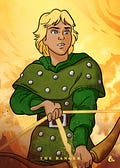



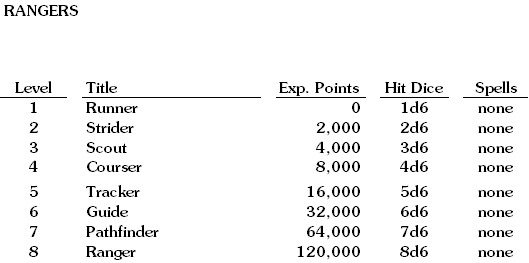
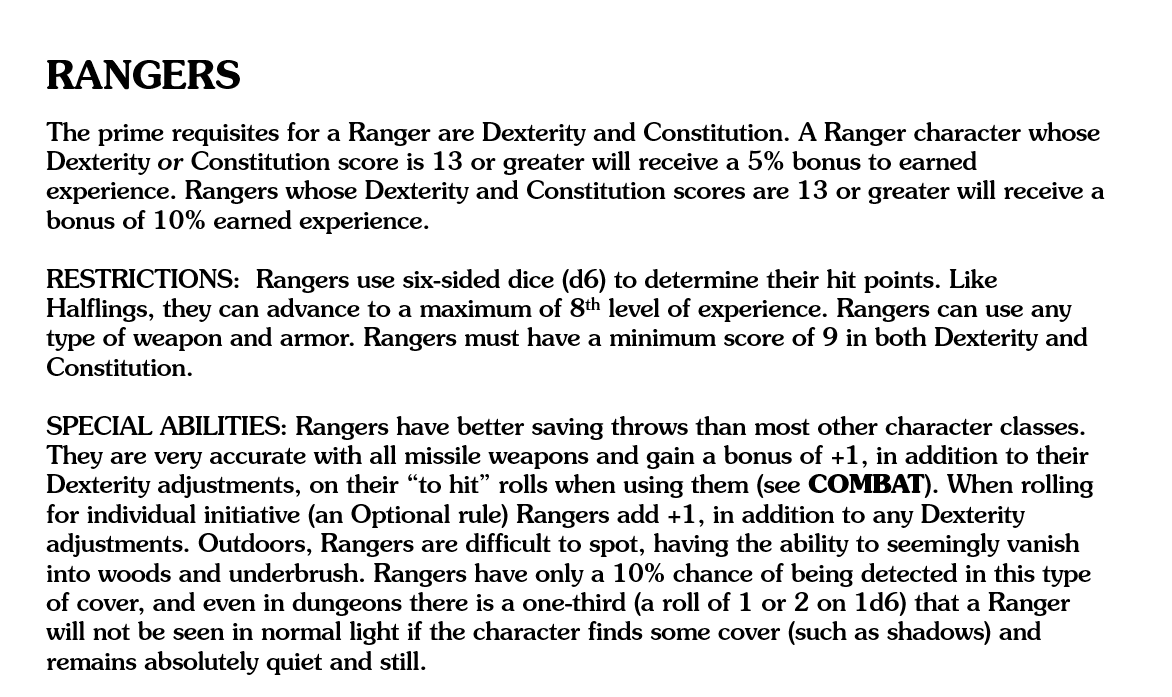
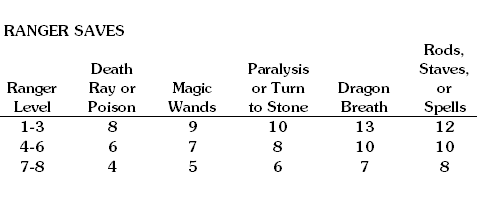
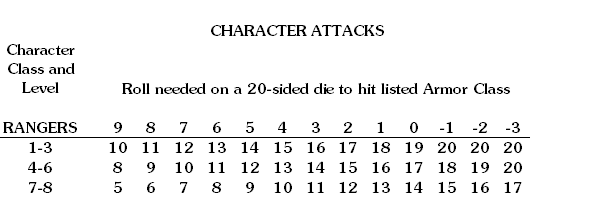
I reckon the reacher should get 2d4 hit dice at first level for the sake of tradition. He also needs to have some ability to win surprise rolls to simulate ambush attacks.
I really like the hobbit as ranger idea. Good job.
Do one on the bard. Please and thank you.